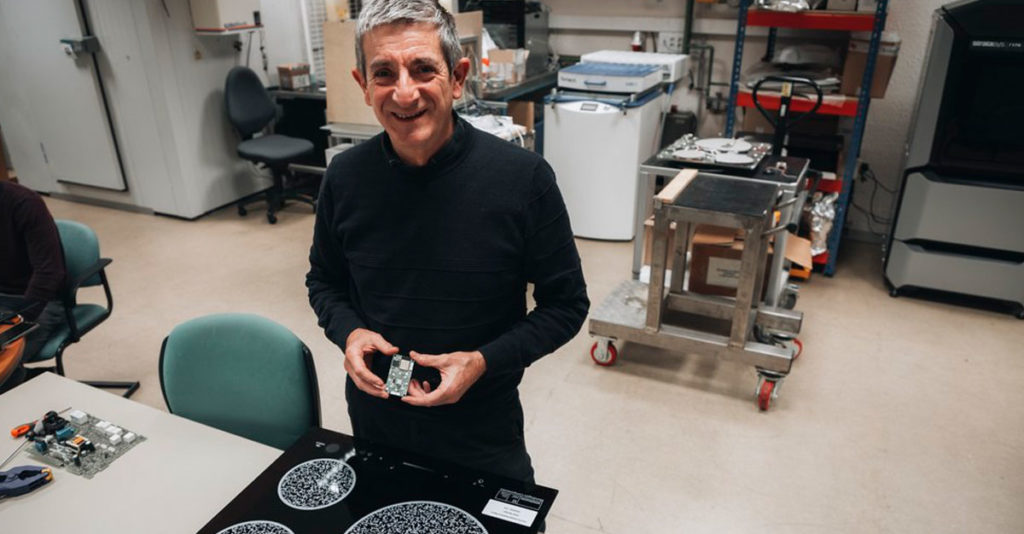Mondragon Componentes will be presenting its Kitchen-Eye at the Global Innovation Day 2021

Javier Aranceta, Innovation Manager at Mondragon Componentes and the Stirling Centre, will take part on November the 3rd in the Global Innovation Day 2021, an event promoted by Innobasque, the Basque Innovation Agency, which every year aims to highlight the innovative work carried out in the Basque Country.
The tenth edition of the Global Innovation Day 2021 will be streamed on November the 3rd, and can be followed on the web: https://www.innobasque.eus/microsite/global-innovation-day-2021/
According to the scheduled programme, the six most relevant cases among the more than one hundred will be presented live, being one of them be the project developed by Mondragon Componentes, to be presented by Javier Aranceta, Innovation Manager of the company.
Kitchen Eye
According to the World Health Organisation, almost 200 million people worldwide (around 30 million in Europe and more than 300,000 in Spain) live with a significant visual disability. The project developed by Mondragon Componentes aims to provide a response to this target group, and does so through innovation.
What was the challenge you faced?
Our challenge was to solve a critical issue for a not so small part of the society. We may not be aware of it, but one of the first things that happens to a visually disabled person is to no longer cook. Therefore, one of the most necessary and interesting activities that we humans do is removed from their lives. Cooking allows us to take care of our health and the health of our relatives, contributes to the development and sustainability of the environment by consuming local products and connects us with our best family memories.
However, for this relevant group of people such activity is very limited, and even more so with current household appliances, where designs of worktops, for instance, have evolved, giving priority to minimalist aesthetics and a functionality that is more oriented towards the ease of cleaning than to universal usability. And beware, because this poor functionality not only affects people with visual disabilities, but also collectives with fine motor skills, so the target audience of the project is multiplied.

I also understand that you needed to develop a product that would meet the very particular needs of this group but that would not entail excessive cost overruns nor limit its use by non-affected groups living together in the same family unit. How have you been able to find a solution to such a complex issue?
The answer is directly by innovating. We basically realised that these groups had other means of communication that allowed them to carry out their lives, such as voice, gestures, or hearing. These were communication channels they could use, but which were not available for these groups. In general, the worktops or the electrical appliances were not prepared to interpret these communication channels. So the solution came by incorporating these interaction channels into our worktops.
We began intensively working with organisations that gave us visibility on various viewpoints, generating an innovative collaborative process. We have involved 3 types of entities in the process:
1.- Entities that could be called “social” such as ONCE, Begisare, Cocinar a Ciegas or, recently, GSR.
2.- Industrial entities that have provided us their knowledge and manufacturing capabilities, such as Eika, Copreci, Fagor Electrónica or Sareteknika.
3.- The invaluable support of ACEDE, the household cluster, acting as a greaser and facilitator of many tasks that are of a complex definition.
Summarising, the solution to the problem came from a collaborative innovative process.
What was the final product you developed?
The final result of the innovation is a worktop that incorporates the latest communication technologies, both gestural and voice, through a device we call Kitchen-Eye. It also includes a patented process that can replace the entire worktop control panel with a single element whose main function is to enable communication between the disabled person and the worktop, always in compliance with the strict regulations that apply to these devices.
And this is our solution, made possible thanks to the contribution of R&D entities, coordinated by our innovation unit at the Stirling Centre, and with the support of the University of Mondragón and the University of the Basque Country, which is already undertaking the first stages of putting our product on the market.
Source: TUlankide